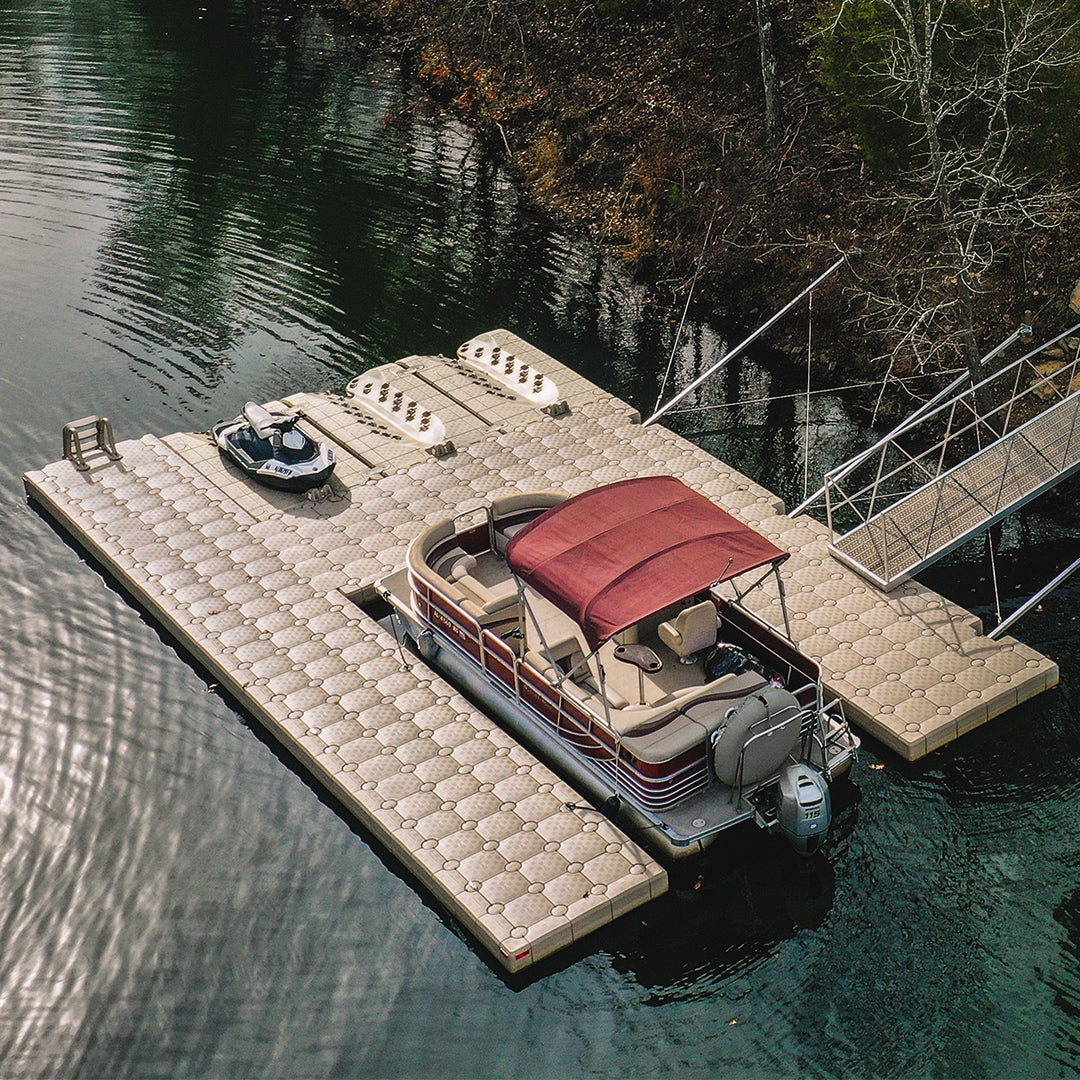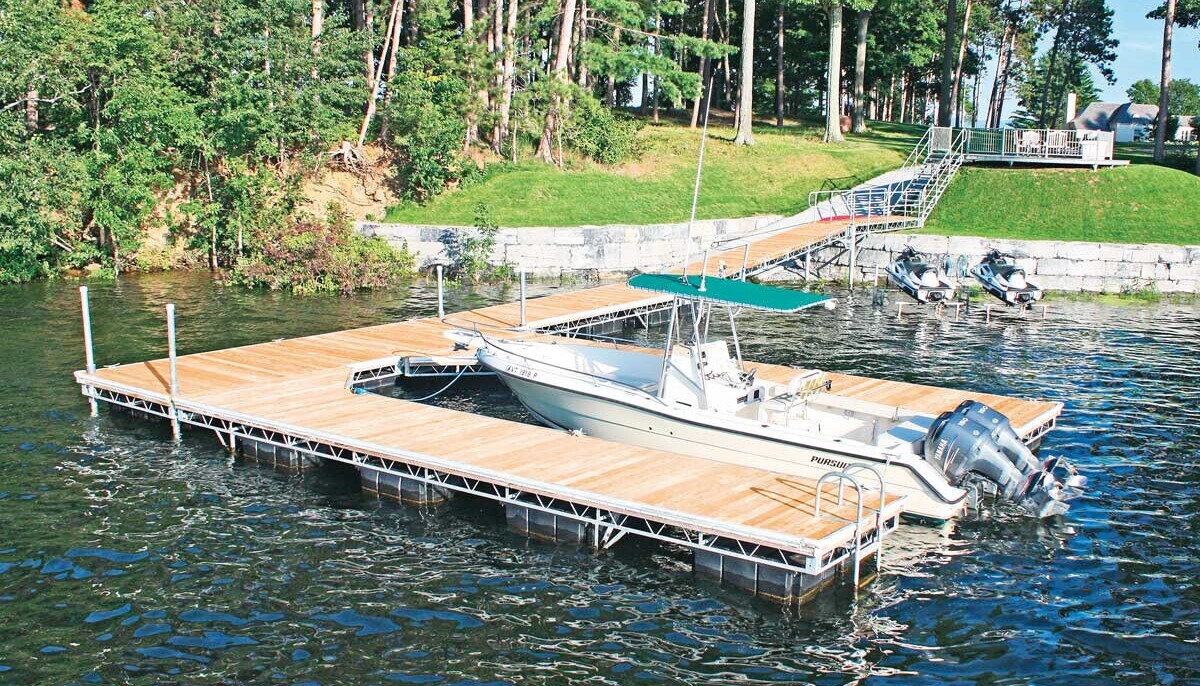Produce the Perfect Docking Solution With Floating Docks
Floating docks present a versatile option for a selection of maritime requirements, adjusting flawlessly to changing water degrees and varied vessel types. Their modular nature enables for rapid installment and relocation, yet the selection of suitable products and style functions is critical for making certain both performance and visual charm. As we discover the essential components that add to the efficiency of floating docks, several vital factors relating to stability and upkeep will certainly emerge, elevating questions about exactly how to enhance your docking experience. The subsequent conversation will certainly light up these vital considerations.

Benefits of Floating Docks
Floating docks deal countless benefits that make them an excellent choice for various maritime applications. Unlike repaired docks, floating docks increase and fall with the trend, making certain constant accessibility for vessels.
Furthermore, floating docks are commonly simpler and quicker to mount contrasted to standard set structures. Their modular layout enables simple setting up and disassembly, facilitating upkeep and relocation when essential. This adaptability is particularly useful for temporary applications or in atmospheres where problems might alter.
Floating docks also have a tendency to be much more ecologically pleasant, as they minimize disturbance to the seabed and bordering aquatic communities. Their buoyant nature lowers the threat of damages to marine life, promoting a much healthier atmosphere. These docks can be personalized to suit different vessel dimensions, ensuring that they satisfy certain operational demands.
Ultimately, the mix of flexibility, convenience of installment, and environmental considerations makes floating docks a very efficient remedy for a large range of maritime needs.
Choosing the Right Products
Picking the ideal materials for floating docks is crucial to make certain durability, durability, and stability. The selection of products directly affects the dock's performance in numerous ecological problems, consisting of direct exposure to water, sunlight, and prospective wear from marine traffic.
Typical materials made use of for floating docks include light weight aluminum, wood, and high-density polyethylene (HDPE) Aluminum is light-weight, corrosion-resistant, and calls for very little upkeep, making it an outstanding selection for durability. Its preliminary cost can be greater compared to other materials.
Timber, while cosmetically enticing and providing a conventional appearance, can be prone to rot and insect damages otherwise appropriately treated. As a result, using pressure-treated wood or naturally sturdy varieties like cedar or redwood can alleviate these issues.
HDPE is a popular option because of its resistance to UV rays and chemicals, together with being eco pleasant. floating docks. It is lightweight and offered in various shades, permitting customization
Eventually, the right material choice will certainly rely on certain demands, consisting of budget plan, desired looks, and environmental factors to consider. Mindful evaluation of these elements will certainly bring about a resistant and effective floating dock solution.
Style Considerations for Security
When developing floating docks, guaranteeing security is a basic aspect that can dramatically affect their performance and safety. Stability in floating dock style is influenced by various aspects, including buoyancy, weight distribution, and the plan of parts. An optimal buoyancy system ought to use products that give sufficient lift while lessening weight. This equilibrium ensures that the dock remains above water, even under varying tons.
Weight distribution is essential; uniformly distributing loads across the dock prevents tilting and improves security. This can be see here accomplished with calculated positioning of docking devices, such as fenders and cleats, in addition to appropriate spacing of floats. Furthermore, the dimensions of the dock should be attentively intended. Broader styles can provide increased stability, specifically in harsh water problems, while longer docks might call for extra supports to avoid sagging.
An additional key factor to consider is the ecological impact, including wave action and wind. Incorporating attributes such as sidewalls or skirting can assist reduce the effects of ecological forces, preserving security in negative conditions. Eventually, a combination of thoughtful style, material choice, and understanding of ecological aspects will certainly produce a drifting dock that satisfies both security and security needs.
Setup Tips and Strategies

Next, secure the necessary authorizations and abide by neighborhood guidelines, which may dictate installation approaches and environmental factors to consider. Involve a certified professional experienced in floating dock installations if called for. Usage high-grade products developed for marine settings to improve resilience and longevity.
When placing the dock, align it alongside the coastline to help with very easy accessibility. Guarantee that the anchoring system is robust, using cinder block or helical anchors to stabilize the dock versus wind and wave activity. It's critical to represent seasonal water level variations, consisting of possible ice motion in colder environments.
During the setup, ascertain the dock's floatation and stability prior to settling the anchoring. Regularly inspect the installation for any type of indications of wear or damage. By following these methods and tips, you can accomplish a secure, practical, and cosmetically pleasing floating dock setup that fulfills your requirements.
Maintenance and Care Standards
Caring and maintaining for floating docks is critical to prolonging their life expectancy and making certain safe usage. Routine assessments need to be conducted to identify any indications of wear, damages, or aquatic development. Seek splits, loosened fittings, or stained areas on the dock's surface area, as these issues can jeopardize architectural honesty.
Cleansing is necessary. Use a stress washer to eliminate algae, barnacles, and particles, which can collect gradually. For persistent development, take into consideration environmentally pleasant cleaning representatives that will not damage marine life.
Additionally, inspect the mooring lines and supports regularly to ensure they are protected and cost-free from rust. Replace any type of torn or harmed lines without delay to maintain security.
Throughout extreme climate, such as tornados or freezing problems, take preventive actions. Protect the dock with extra mooring lines and, if feasible, eliminate any type of detachable components to stop damages.
Conclusion
In conclusion, the implementation of floating docks presents a flexible and reliable docking option suitable for different maritime applications. With appropriate installment and regular upkeep, floating docks can supply reputable and efficient docking experiences for a wide range of vessels.
As we explore the crucial components that contribute to the performance of floating docks, several essential elements concerning security and maintenance will certainly emerge, elevating questions regarding exactly how to enhance your docking experience. Unlike repaired docks, floating docks increase and fall with the trend, making find this sure constant availability for vessels.When creating floating docks, ensuring security is an essential element that can considerably affect their performance and security. Security in floating dock style is influenced by different factors, consisting of buoyancy, weight circulation, and the setup of parts. Ultimately, a mix of thoughtful layout, material selection, and understanding of ecological factors will certainly produce a floating dock that fulfills both stability and safety and security needs.